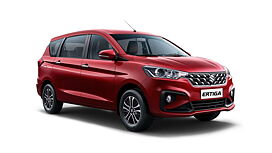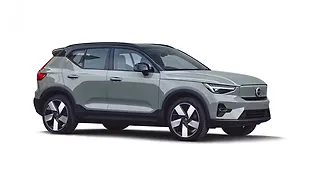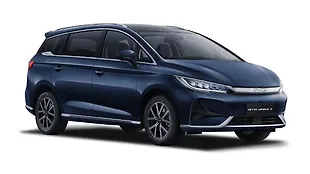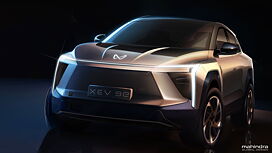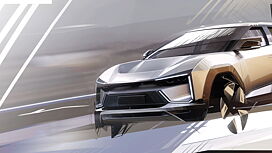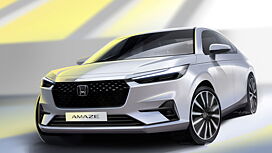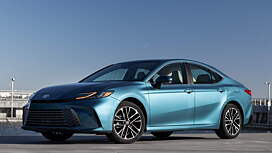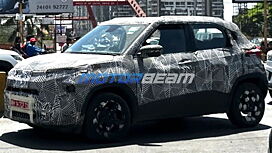What is it?
This is the new 2022 Ertiga CNG. Visually, it looks no different from the non-CNG variants, the only indicator being the CNG sticker on the rear windshield. You’ll need to open two doors to realise that this is different; under the fuel door, there’s now an inlet to fill the CNG tank as well. And there’s a large hump at the base of the boot which hides the CNG tank.

Two significant changes have been made to the Ertiga CNG with this update, apart from the facelifted exterior. First, the Ertiga CNG is now available in a higher ZXi grade as compared to its predecessor, which was limited to the mid-spec VXi trim. And second, the engine is now a K15C unit rather than the earlier K15B. What do these changes mean? Read more to find out.
What’s it like inside?

Apart from the feature additions, Ertiga’s interior design has not changed. The only difference in the cabin is the digital driver’s display which gets new graphics, especially for the CNG system.

In terms of equipment, because this is the higher ZXi trim, you get 15-inch alloy wheels, rear-windshield defogger and wiper, front fog lamps, and chrome exterior door handles on the outside.

Inside, the Ertiga CNG now gets automatic climate control, a keyless start-stop button, Suzuki Connect connected-car technology suite, an eight-way adjustable driver seat including adjustment for height, a front centre armrest with storage, one-touch-up function for the driver-side window, and the SmartPlay Studio touchscreen infotainment system.

Further, the touchscreen system is compatible with Android Auto and Apple CarPlay. Maruti could have offered a factory-fitted reverse camera display though, to make parking the Ertiga easier and safer. More because the aftermarket or dealership-fitted cameras often do not have the same quality or usability perspective as the factory-fitted unit.

Now, the Ertiga can be seamlessly switched between its two fuel sources on the fly via a button on the panel, on the right side of the steering wheel. What is really interesting is the instrument cluster and the displays that it has specifically designed for the CNG system. Though there is no distance to empty shown when running on CNG mode, there is a large fuel gauge made to look like a tank.

The digital driver display also encourages you to drive as much as possible on CNG with a timer showing the time spent on CNG and a pie chart displaying the distribution of fuel consumed over time.

The third-row seats are comfortable, with enough thigh support and an ergonomically sound seating posture even with passengers over 5ft. in all three rows. Maybe we are spoilt by the Kia Carens’ one-touch fold-and-tumble second-row seat, but the Ertiga feels a bit cumbersome to get in and climb out of.

The space between the plastic cladding at the side of the second-row seats and the door pillar is a bit tight, which forces you to contort a bit — the process is quite inelegant when performed by those with larger frames.

The biggest elephant in the room is the boot space, or the severely compromised nature of it. The standard car offers 209-litre space with all the seats up, and we reckon this could be reduced by 80- to 100-litre due to the CNG tank.

The pronounced hump also makes it difficult to place objects in the boot, and you have to be careful while opening it after a drive as things might fall out because of their elevated position. Moreover, when the rear seats are folded flat, the hump acts as a barrier, forcing you to lift bags higher than usual while loading or unloading them.

Unfortunately, Maruti does not offer a roof carrier or a roof box as part of its official accessories list. Buyers looking to regularly utilise all the seats the Ertiga has to offer will have to look to aftermarket companies for such products, which could void the warranty.
What’s it like to drive?
If you were to compare the on-road prices of the pre-facelift car and the new car in their VXi trims, there is a price difference of about Rs 90,000. And that’s mostly down to the addition of a new engine under the hood.

The new Ertiga CNG, like its petrol-only counterpart, gets Suzuki’s new K15C engine. Changes have been made to the engine to improve its mileage and reduce emissions, with a focus on the latter. Each cylinder is now fed by two fuel injectors instead of one, this helps with better combustion; less wastage means more savings. Secondly, the engine gets variable valve timing on both the intake stage and exhaust stage. Again, this is designed to improve the combustion efficiency of the engine, thus significantly reducing emissions.

In terms of pure numbers, the new K15C S-CNG motor develops 87bhp, which is 4bhp lesser than the K15B engine, but at 5,500rpm compared to the previous car’s 6,000rpm. Maximum torque developed remains the same but comes in at 4,200rpm as against 4,400rpm on K15B. Further, the claimed mileage, on CNG, is reduced to 26.1km/kg as compared to 26.2km/kg.

However, none of this reflects the characteristics of the new Ertiga CNG. It’s super smooth. Too smooth, some might say. Even in the CNG mode, the older Ertiga seemed eager to go at the touch of the throttle. This new one seems to have taken a chill pill, forcing you to adapt a sedate driving style — which in turn should wring every bit of usable power from that drop of petrol or that hint of CNG.

In our real-world tests, the Ertiga CNG returned 18.01km/kg in the city and 35.6km/kg on the highway. With a combined mileage of 22.41km/kg, the Ertiga has a CNG-only range of 202km (considering the tank holds 9kg of CNG, this can change depending on the time of day, ambient temperature, and pump compression).
Now, CNG costs Rs 74/kg in Mumbai at the time of writing this review, which means you spend Rs 666 to drive about 200km, which equals Rs 3.3/km driven. How much money would you save by driving on CNG? The following table should give you an idea:
Running Cost Comparison
| Ertiga CNG(22.41km/kg) | Ertiga Petrol MT(20.51km/l) | |
| Fuel cost per unit | Rs 74/kg | Rs 111.35/litre |
| Cost per km | Rs 3.3/km | Rs 5.43/km |
| Cost for 100km | Rs 330 | Rs 543 |
The Ertiga CNG’s suspension setup is similar to the standard car, with MacPherson struts up front and a torsion beam setup at the rear. Maruti has changed the spring rates and the hydraulic shock damping to take into account the 50kg increase in weight due to the CNG tank and the added piping. Nonetheless, the ride quality is soft and compliant, with no hints of nauseating vertical movements over bumps or sudden jolts over sharp road imperfections.
How does it compare and what’s the price?

The Ertiga CNG has no direct rivals and so there is no comparison and no choices for potential buyers. That said, if you do not need more than five people seating, you have hatchback and compact sedan offerings from Maruti Suzuki, Hyundai, and Tata which cost much less.
All said, the Maruti Suzuki Ertiga is offered in two trims: 1) VXi - Rs 10.44 lakh, ex-showroom. 2) ZXi - Rs 11.54 lakh, ex-showroom. You can check out the on-road prices of the Ertiga CNG in your city at this link.
Pictures by Kaustubh Gandhi








